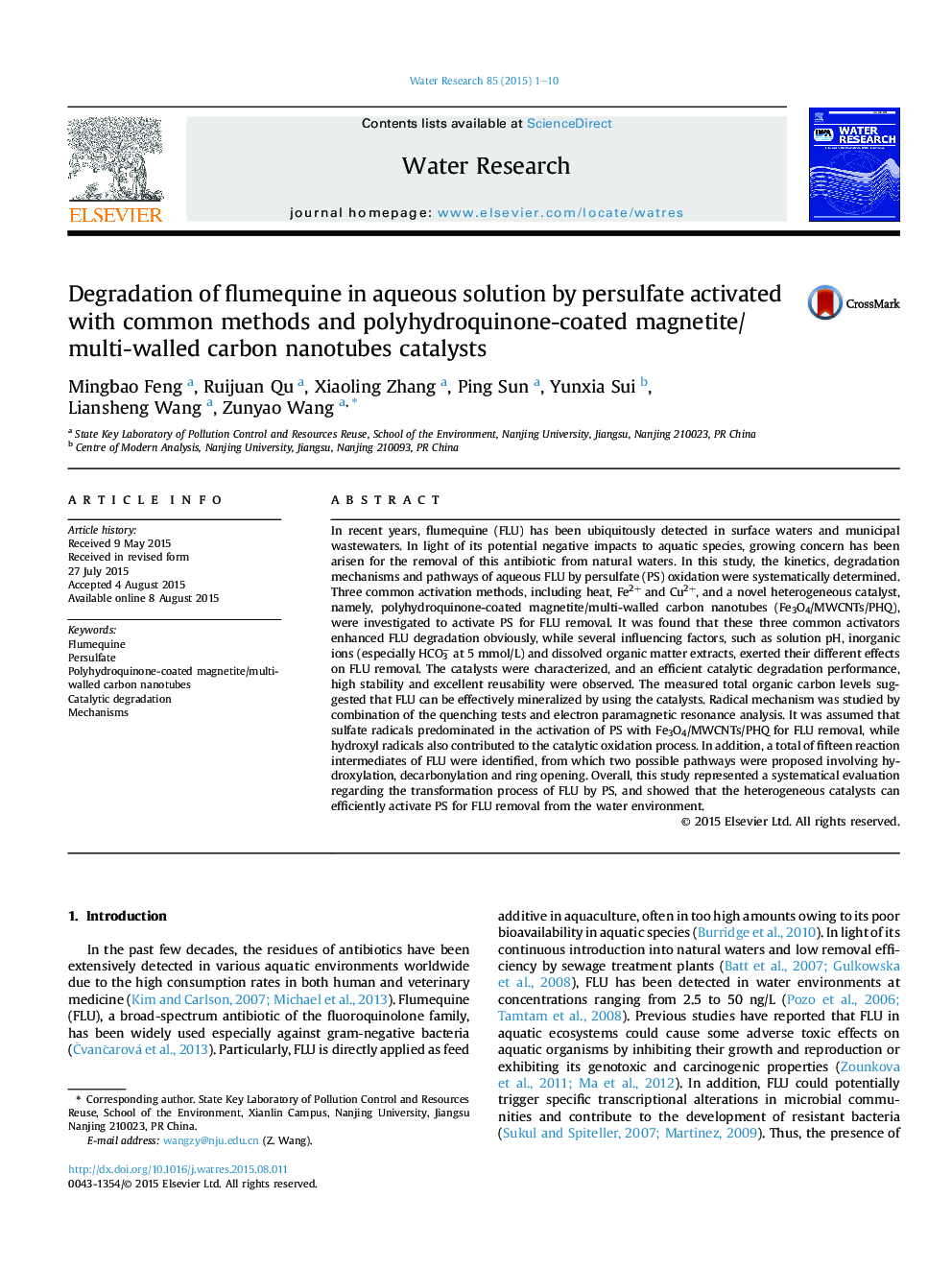| Article ID | Journal | Published Year | Pages | File Type |
|---|---|---|---|---|
| 6365814 | Water Research | 2015 | 10 Pages |
â¢The transformation processes of aqueous FLU by persulfate were systematically studied.â¢Fe3O4/MWCNTs/PHQ can be used as the efficient heterogeneous catalysts for persulfate oxidation of FLU.â¢The activation mechanisms and reaction pathways were proposed.
In recent years, flumequine (FLU) has been ubiquitously detected in surface waters and municipal wastewaters. In light of its potential negative impacts to aquatic species, growing concern has been arisen for the removal of this antibiotic from natural waters. In this study, the kinetics, degradation mechanisms and pathways of aqueous FLU by persulfate (PS) oxidation were systematically determined. Three common activation methods, including heat, Fe2+ and Cu2+, and a novel heterogeneous catalyst, namely, polyhydroquinone-coated magnetite/multi-walled carbon nanotubes (Fe3O4/MWCNTs/PHQ), were investigated to activate PS for FLU removal. It was found that these three common activators enhanced FLU degradation obviously, while several influencing factors, such as solution pH, inorganic ions (especially HCO3â at 5Â mmol/L) and dissolved organic matter extracts, exerted their different effects on FLU removal. The catalysts were characterized, and an efficient catalytic degradation performance, high stability and excellent reusability were observed. The measured total organic carbon levels suggested that FLU can be effectively mineralized by using the catalysts. Radical mechanism was studied by combination of the quenching tests and electron paramagnetic resonance analysis. It was assumed that sulfate radicals predominated in the activation of PS with Fe3O4/MWCNTs/PHQ for FLU removal, while hydroxyl radicals also contributed to the catalytic oxidation process. In addition, a total of fifteen reaction intermediates of FLU were identified, from which two possible pathways were proposed involving hydroxylation, decarbonylation and ring opening. Overall, this study represented a systematical evaluation regarding the transformation process of FLU by PS, and showed that the heterogeneous catalysts can efficiently activate PS for FLU removal from the water environment.
Graphical abstractDownload high-res image (343KB)Download full-size image
